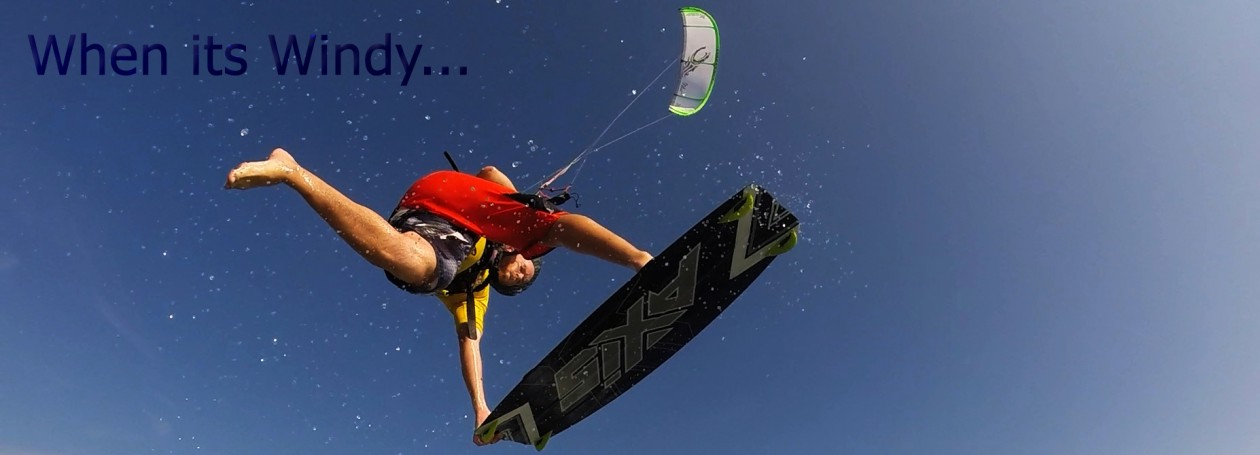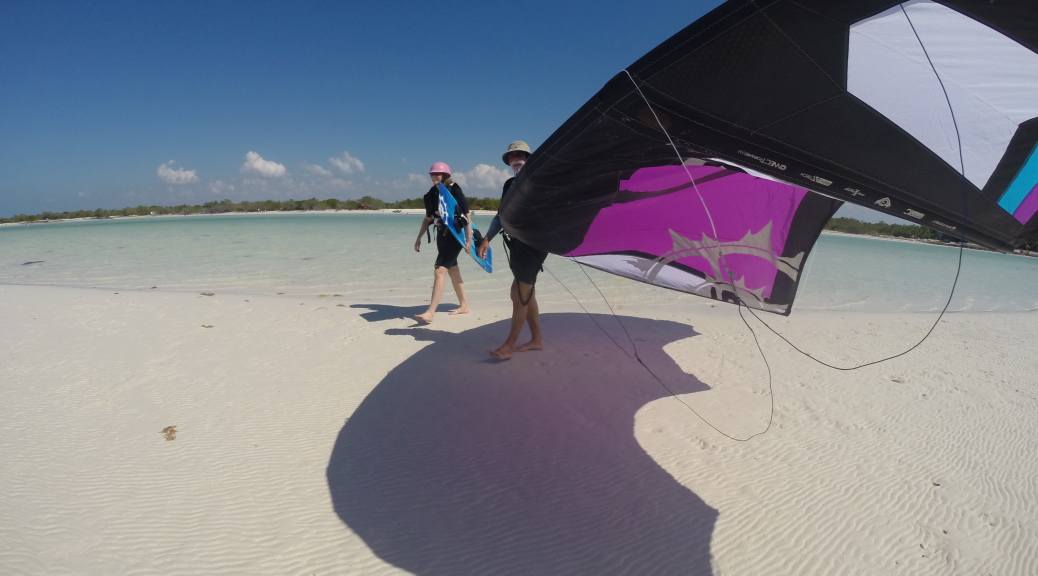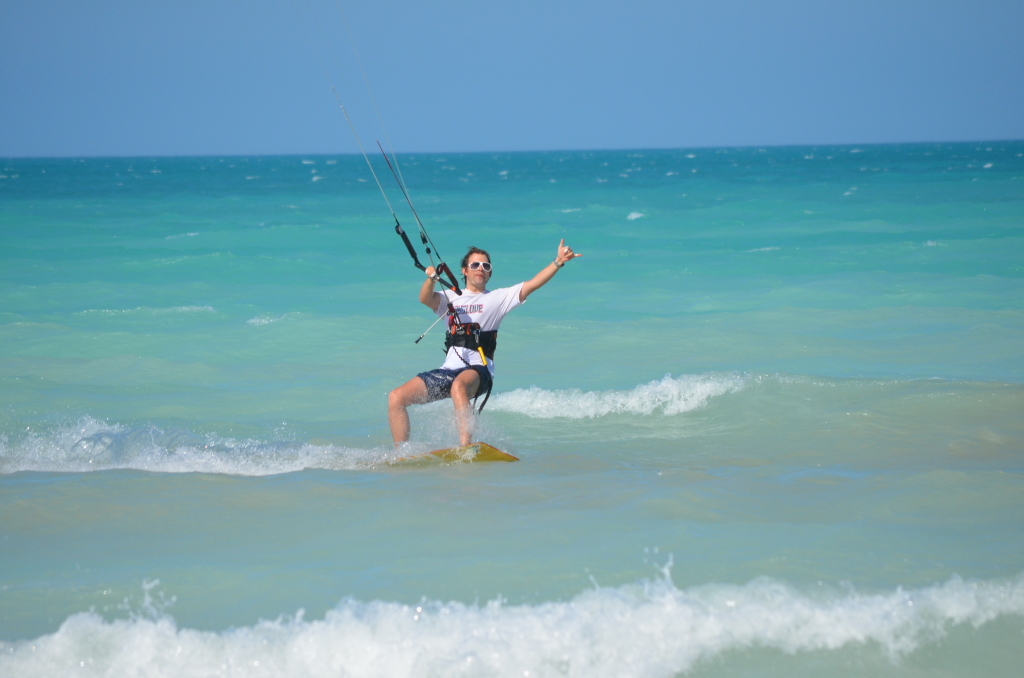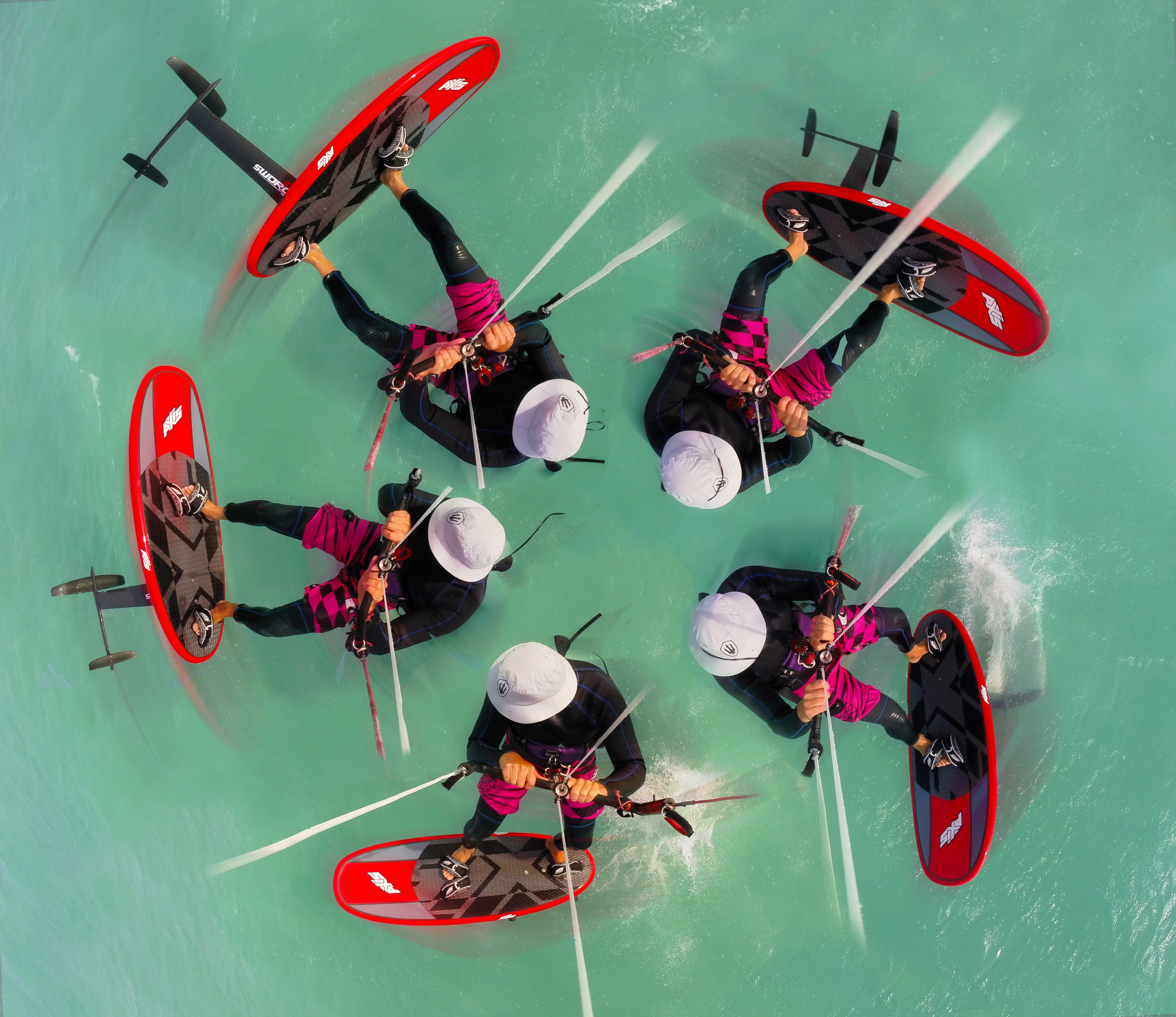So you’ve finished your course of kiteboarding lessons and are thinking about taking the plunge and getting your own gear?
Good decision!!!
Getting your own gear will allow you to get out and practice more, using those skills you have just learnt to have LOTS of fun on the water.
A kite is a large investment but there are hundreds of kites to choose from, so here’s a few tips on what to look for and questions to ask.
Ask your instructor!
If you used a particular model of kite during your lessons, you really enjoyed it and found it easy to use, then this may be a good starting point for you. You will know some of the finer points of this kite and you probably won’t get any nasty surprises. Ask your instructor for recommendations when you complete your course. We get asked this all the time and we really like to help.
Which Style of Kite ?
You should look at LEI (Leading Edge Inflatable) kites aimed at beginners, freeriders or kites for waves. Water relaunchable foil kites do work very well on the water but as a beginner I would steer away from them. The main reason being that they can be very difficult to perform a self rescue with.
These LEI kites come in a variety of styles: Delta, SLE, Bow, Hybrid, Bridled C and C kites
As a beginner I would avoid pure C kites and Bridled C kites, and race kites. C kites usually have a smaller wind range and are more difficult to relaunch. Race kites will be built using lighter less durable materials. You really want life to be as straight forward as possible at the beginning of your kite life.
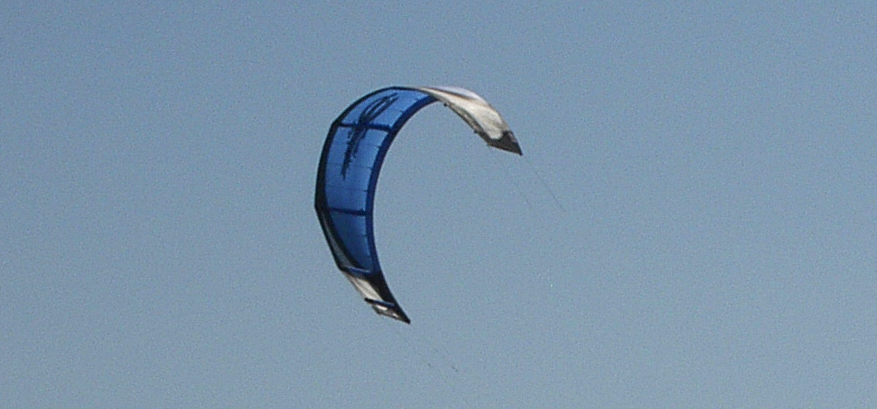
Delta, SLE, Bow, Hybrid kites are very easily relaunched, with some it is almost automatic. They are very easy to fly and have a larger wind range than C kites.
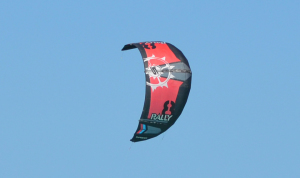
What size kite do I need to buy?
This is possibly the most commonly asked question by beginners. The answer will depend upon wind strength and your weight.
In the ideal wind range of 12-20 knots for beginners a kite between 14 m2 and 10 m2 should serve you very nicely. Someone of around 100kg would need a 14/13/12 for this wind range whilst someone of 65 kg may need a 10/11.
Big kites of 10 m2 and larger move more slowly giving beginners more time to think and react. Small kites pack a punch in the higher winds and tend to be very fast and twitchy. To start with using small kites can be frustrating for beginners but with experience can be a lot of fun.
Remember:
Higher winds need smaller kites and lower winds need bigger kites.
Heavier people need bigger kites than smaller people.
-
What will be your most common conditions at your local spot? If you can check out the location first, speak to the local kiteboarders and try to gauge the general wind direction and speed. Ask them what is the normal size kite for them at the spot this will give you a good starting point.
-
After your lessons the safest and best wind strengths to train in are from 12-20 knots (4-6Bft). More than 25knots (7Bft) is too windy for most beginners. Build up your experience first before progressing to stronger winds.
-
You may want to consider having two different kite sizes to cover different wind strengths.
-
Most of the top brands give a wind chart to give an idea of what size kite you need for certain wind speeds. These are based on a ‘standard rider’ who is approximately 75kg so you may need to adjust and consider! Don’t worry if you aren’t a standard size, kiters come in all shapes and sizes!
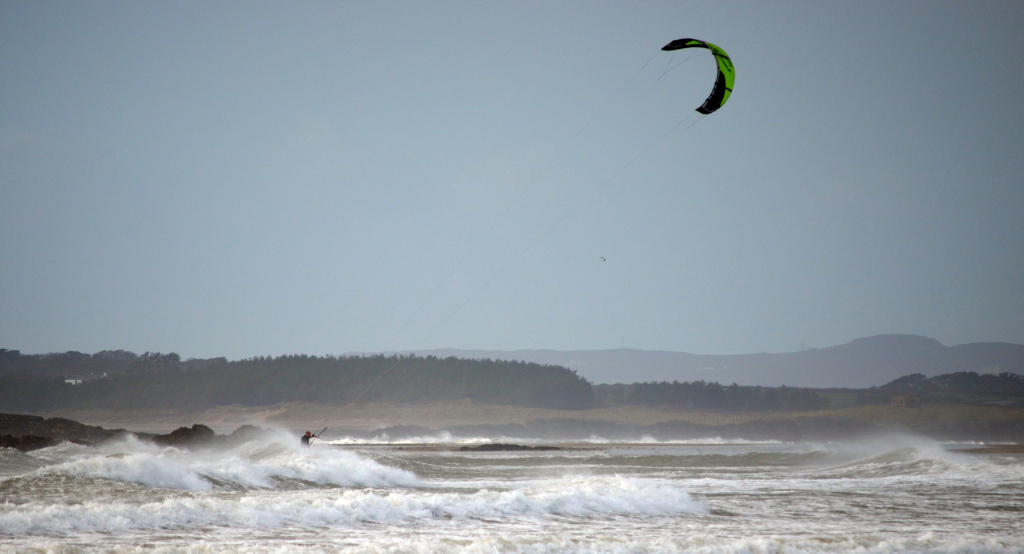
New or Second-hand kite?
This depends upon several factors: Budget, free time and whether you have knowledgeable kitesurfing friends that can help you check second hand kites.
If you are short on time but have a large budget buy new.
If you are rich in time but short on cash second-hand could be the way forward.
Buying New
-
It should be ready to fly without any modifications straight out of the bag.
-
You will probably be able to buy the kite, size and colour that you want immediately.
-
Buying new kites should give you the guarantee that they are free from defects, and in full working order. They should come with a decent warranty. (Make sure to buy from an authorised dealer to ensure warranties are valid.)
- You should get good support from an authorised dealer. Ask them which kite is most suitable for you.
-
You can be sure that the lifespan of the kite is at its maximum.
-
If you bargain with the shops you may be able to get a discount for a quiver of kites, or a package for harness, board and kite.
-
A good tip when buying new and you have a tight budget is to buy kites from the previous season. You will often pick up a real bargain. Look out for brands which are about to release their latest and greatest offerings. This is when you’ll pick up the best prices on last seasons models with the greatest chance of finding the right size, model etc.
Buying second-hand
-
You can pick up some real bargains second-hand however you can also pick up some real lemons. Think of it the same way as buying a used car. The more you know about the sport the better. However you’re a beginner so unless you know someone knowledgeable that can help you then you will be entering a minefield blind.
-
The longevity of the kite is going to be unknown. If you buy a heavily used kite it may well be very cheap but it could fail at any moment.
-
Auction sites or facebook pages are good places to find second hand kites, but it really is a case of ‘buyer beware’
-
Buying second hand will mean trawling through these ads to hunt down the right size, style and model which can take a lot of time. You will usually need to compromise in some way.
-
If you do buy second hand ideally you want to be able to see the kite inflated to check the canopy for nicks, cuts, repairs, leaks, and the quality and thickness of the trailing edge. This is why having good kitesurfing friends to help you check is essential.
-
Damage to the canopy larger than 3cm should have been stitched or glued. Repaired small pinprick holes that have a patch on should cause no problems. If it leaks forget it. Good quality large professional repairs shouldn’t affect the way the kite flies but as a beginner why take the chance.
-
When looking at a second hand kite, you need to look at the same areas as you would in a ‘pre-flight check’ when setting up your kite. Make sure you check the bridles and lines for any wear or thinning from pulleys, that the lines are free from knots, and that there are no bulges or areas of weakness in the leading edge. A bulge might indicate a problem with the bladder, or problems with the seam/stitching. The depower rope should move freely, and not be worn or twisted and the quick release should be fully functional.
-
Buy a kite from the most recent year that you can! At least within the last 3 years.
-
As a beginner its advisable to buy a kite complete with the correct bar and lines. Don’t forget to check those too.
-
Ask your instructor if they know of any good second hand deals. However don’t email them repeatedly with questions about the latest kite you’ve spotted on ebay…
Good kites for Beginners/Intermediates
All major brands have a good range of kites. This list below is not exhaustive, but includes kites from some of the major companies that you may want to look into. We have selected some kites we think are more suited to beginners but will grow with you as you progress on to become intermediate riders and beyond. All of these kites are either SLE, Hybrid, Delta or Bow kites and have a good depower range, functional safety systems and great relaunch.
Once you’ve bought your first kite why not check out our Beginners Survival Guide
|
Brand |
Model |
|
AIRUSH |
DNA,Lithium |
|
BEST |
Kahoona, Cabo |
|
CABRINHA |
Switchblade, Radar |
|
SLINGSHOT |
Rally |
|
OZONE |
Catalyst, Reo |
|
F-ONE |
Bandit, Trust |
|
LIQUID FORCE |
Envy, Solo |
|
NAISH |
Ride, Pivot |
|
NORTH |
Neo, Evo |
